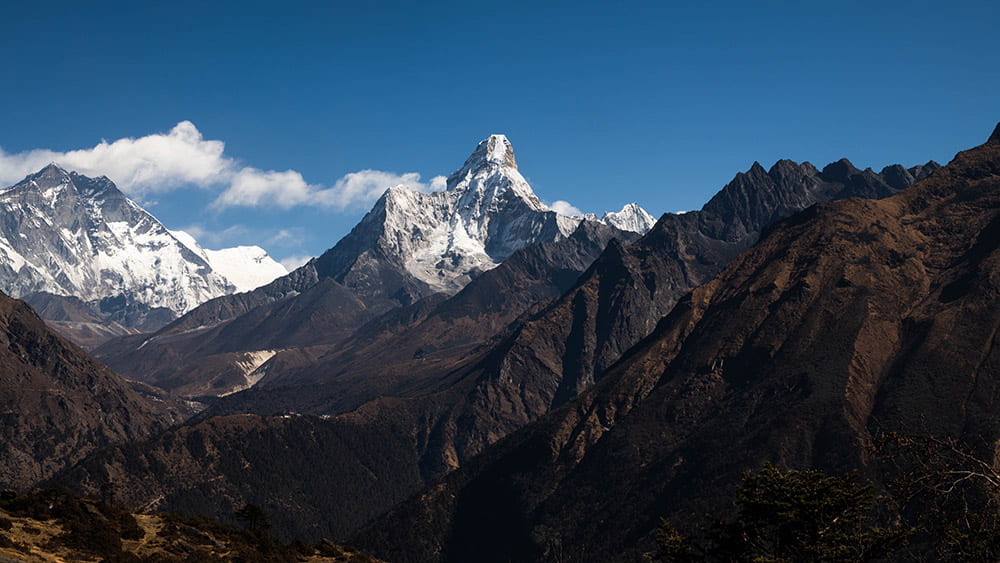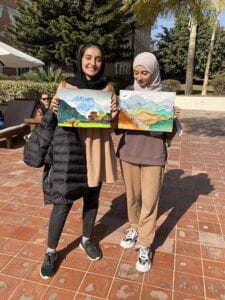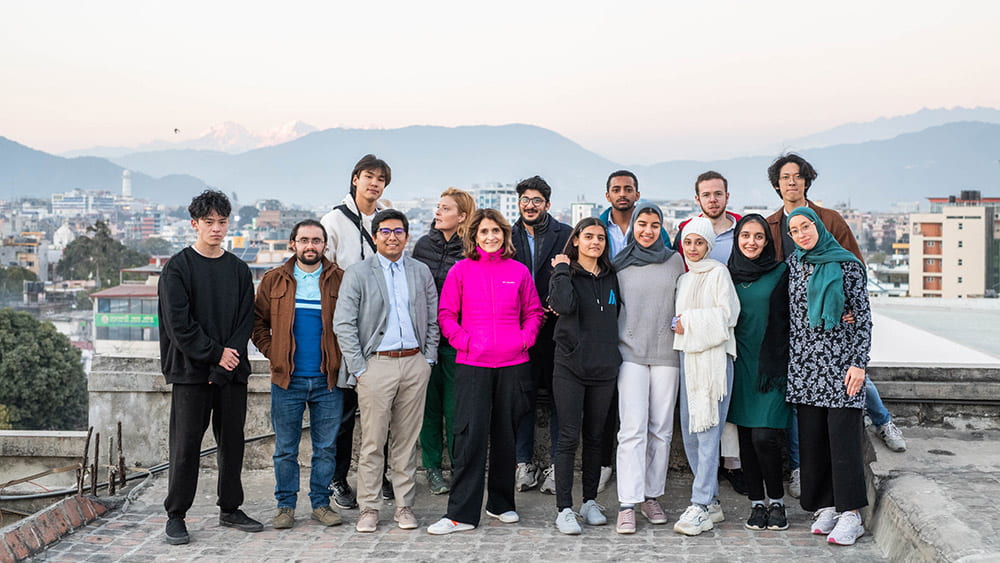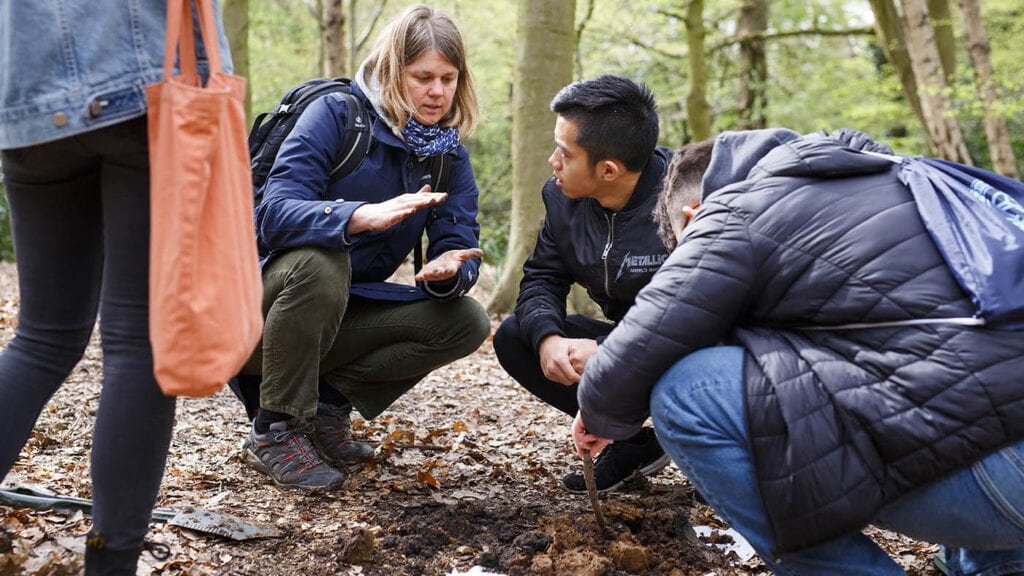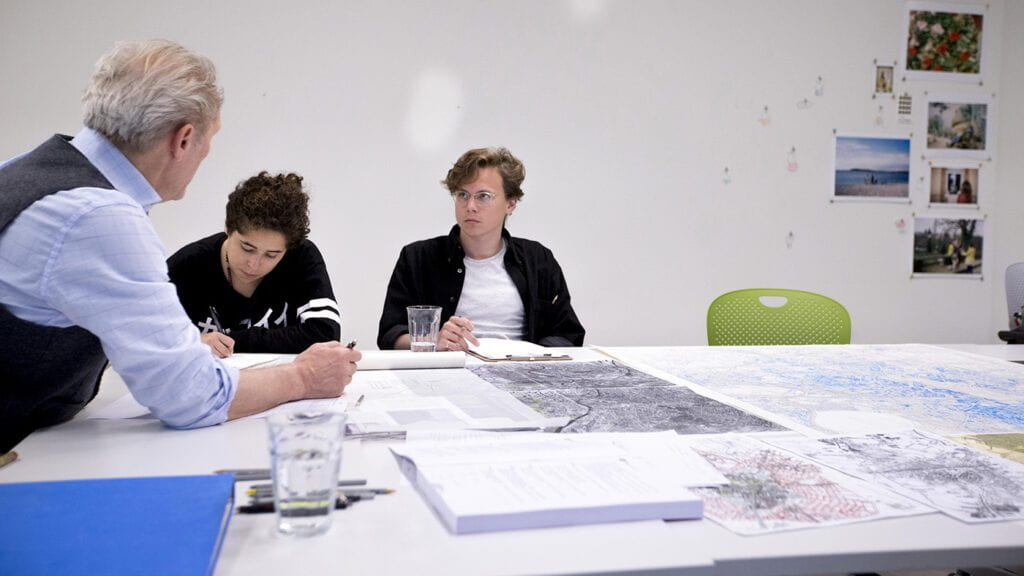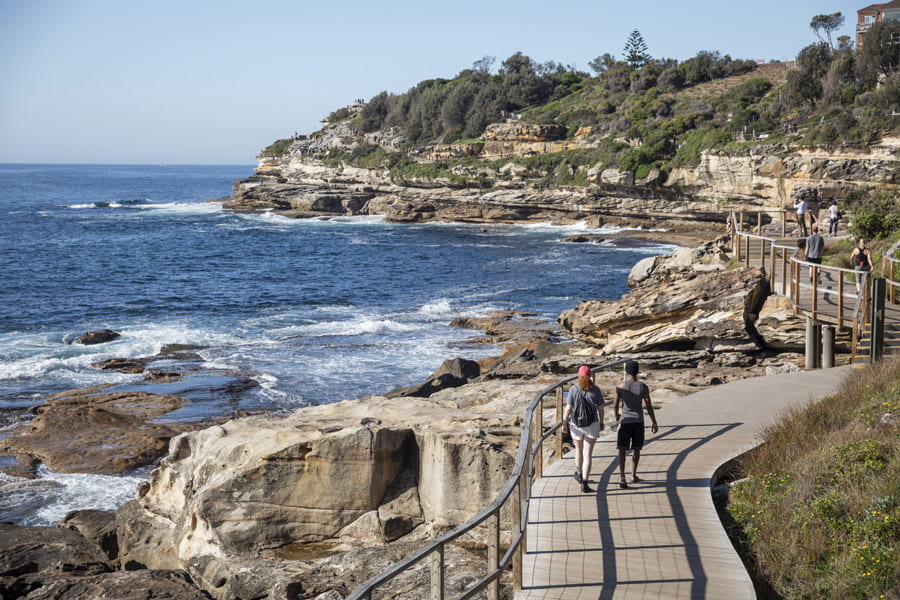All around us, there are signs the world is rapidly warming. But the Himalayas, which experiences floods and avalanches that could plunge the 2.5 billion people who rely on the mountains for freshwater into crisis, is a region under constant threat. Now, as part of NYU Abu Dhabi’s eARThumanities research initiative, the Geopolitics and Ecology of Himalayan Water (GEHW) project seeks to address the multitude of challenges the Himalayas encounters due to climate change.
This winter two January Term (J Term) classes—The Media, Climate Change and Other Calamities and The Himalayas: Geopolitics and Ecology of Melting Mountains—explored the environmental, geopolitical, and cultural implications of climate change. After learning about the subjects in the classroom, students flew to the Nepal Himalayas to witness these changes directly and begin to work toward solutions.
“The trip itself was the highlight of the J Term because students were asked to travel as scholars and researchers, not as tourists,” says Sophia Kalantzakos, the founder of eARThumanities and Global Distinguished Professor of Environmental Studies and Public Policy. “We had a vast array of different experts who came to speak to us about the issues at hand, but we also wanted the students to fall in love with the mountains and the region. We had an opportunity to use all our senses in ways you’re not able to when stuck in a classroom.”
In Nepal NYU Abu Dhabi students combined scientific research and conferences while also immersing themselves in culture and place. Research affiliate and GEHW founding member Rastraraj Bhandari, NYU Abu Dhabi Class of 2019, adds, “The foundational thing that students were able to gather is how the climate crisis and the water crisis impact every sector and every field. It’s deeply rooted in how we live. Incorporating the humanities into understanding a scientific problem allows us to humanize the crises.”
For Sophie Pfisterer, a first-year student interested in film and sustainability, the experience was life-changing. “It was a combination of everything I was interested in, and the trip itself was just incredible because I felt like I connected with one of my passions every day,” she says. One day they visited a farming initiative seeking environmentally friendly and culturally sensitive solutions to improve the quality of life in alpine villages. The next day, they attended a conference with experts including the British ambassador to Nepal, a filmmaker, the CEO of the World Wildlife Fund Nepal, and an ornithologist. “It was this incredible way of learning so much because it meant something to me and I knew I’d use it. That’s different from learning something for a test. With that—once you’re done—you lose that information because it doesn’t mean anything to you.”
Federico Jannelli, a recent graduate who majored in Economics and minored in Arabic, traveled to Nepal to better understand the multidisciplinary ramifications of the crises. “As an Economics major, it was interesting to understand more about the strong economic relationship and financial links between Nepal and the United Arab Emirates,” he explains. “Professor Kalantzakos did a great job linking the concerns of the various stakeholders. She highlighted the need for cooperation. We urgently need to tackle these problems, but the solution isn’t just to have high-ranking diplomats and politicians sit at a roundtable and discuss solutions. We need to involve people who are experiencing the consequences of these crises every day.”
